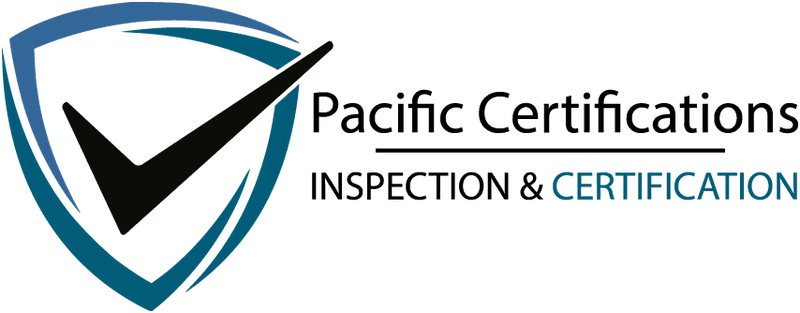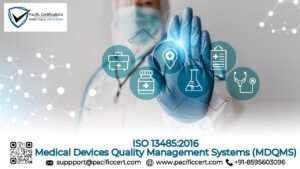What is ISO/IEC 20243-1:2018 – Information Technology – Open Trusted Technology ProviderTM Standard (O-TTPS) – Mitigating Maliciously Tainted and Counterfeit Products?
ISO/IEC 20243-1:2018-Information technology is part of a series of standards developed to address the risks associated with maliciously tainted and counterfeit products in the technology supply chain. The ISO 20243-1 standard focuses on establishing requirements and recommendations for organizations involved in the technology supply chain to mitigate the risks associated with maliciously tainted and counterfeit products. The standard aims to ensure the trustworthiness, integrity, and authenticity of technology products and services.
Here are some key aspects covered in ISO/IEC 20243-1:2018:
Scope and Applicability: The standard defines the scope and applicability of the requirements and recommendations outlined in the document. It specifies that these provisions are applicable to organizations involved in the development, manufacturing, distribution, installation, and maintenance of technology products and services.
Requirements for Trustworthiness: The standard sets forth requirements for establishing and maintaining trustworthiness in the technology supply chain. This includes measures to ensure the integrity, authenticity, and confidentiality of technology products, as well as the protection of associated intellectual property.
Counterfeit Mitigation: ISO/IEC 20243-1:2018 provides guidelines for organizations to mitigate the risks associated with counterfeit products. It emphasizes the importance of implementing processes and controls to detect and prevent the introduction of counterfeit components or products into the supply chain.
Supplier Management: The standard emphasizes the need for effective supplier management practices. It includes requirements for organizations to evaluate and select suppliers based on their ability to meet the trustworthiness requirements outlined in the standard. It also recommends ongoing monitoring and assessment of suppliers’ adherence to these requirements.
Configuration Management: ISO/IEC 20243-1 highlights the significance of configuration management in maintaining the integrity and authenticity of technology products. It provides recommendations for organizations to establish and maintain effective configuration management processes throughout the product lifecycle.
Incident Response: The standard outlines requirements and recommendations for incident response and handling procedures. It emphasizes the importance of promptly addressing and mitigating incidents related to maliciously tainted or counterfeit products and establishing appropriate communication channels.
Overall, this standard is part of the Open Trusted Technology ProviderTM Standard (O-TTPS) series, which aims to promote best practices for ensuring the trustworthiness of technology products and services. It provides organizations with a framework to mitigate the risks associated with maliciously tainted and counterfeit products in the technology supply chain and enhance trust among stakeholders.
It’s worth noting that this standard specifically addresses the requirements and recommendations for mitigating maliciously tainted and counterfeit products in the technology sector.
Related ISO Certifications for ISO/IEC 20243-1:2018
ISO/IEC 20243-1:2018 – Open Trusted Technology Provider™ Standard (O-TTPS) is focused on mitigating risks of maliciously tainted and counterfeit products in the supply chain. Organizations aiming to implement this standard often benefit from other complementary ISO standards that enhance cybersecurity, risk management, and supply chain integrity.
Here are some related certifications to link internally:
1. ISO/IEC 27001 – Information Security Management Systems (ISMS)
Supports the establishment of a secure information environment—essential when implementing supply chain security standards like ISO/IEC 20243.
2. ISO/IEC 27036 – Information Security for Supplier Relationships
Focuses on managing security in supplier relationships, perfectly aligning with the goals of ISO/IEC 20243-1.
3. ISO/IEC 27032 – Cybersecurity Guidelines
Provides guidance on improving cybersecurity posture, helping organizations protect against cyber threats in the technology supply chain.
4. ISO 22301 – Business Continuity Management Systems
Ensures continued operations in the face of supply chain disruptions or security breaches.
5. ISO 31000 – Risk Management Guidelines
Assists in identifying, assessing, and mitigating risks associated with counterfeit and tainted ICT products.
6. ISO 9001 – Quality Management Systems
Helps ensure consistent quality across products and processes, foundational to building trusted technology supply chains.
What are the requirements of ISO/IEC 20243-1:2018 – Information Technology
Trustworthiness Objectives:
- Define and establish trustworthiness objectives for the organization, considering factors such as integrity, authenticity, and confidentiality of technology products and associated intellectual property.
- Develop a trustworthiness plan that outlines the approach, goals, and activities to achieve the defined trustworthiness objectives
Configuration Management:
- Implement configuration management practices to control and track changes to technology products throughout their lifecycle.
- Establish processes to verify the integrity and authenticity of configuration baselines and ensure the traceability of components and software
Supply Chain Management:
- Conduct due diligence in selecting suppliers based on their ability to meet the trustworthiness objectives and requirements.
- Develop and maintain a supplier management program that includes evaluating, monitoring, and auditing suppliers for compliance with trustworthiness requirements.
- Establish contractual agreements with suppliers to communicate trustworthiness expectations and compliance obligations
Counterfeit Mitigation:
- Develop and implement processes and controls to detect, prevent, and mitigate the risks associated with counterfeit products in the supply chain.
- Perform risk assessments to identify potential vulnerabilities and develop appropriate mitigation strategies.
- Establish practices for inspecting and verifying the authenticity of components, including the use of trusted sources and authorized distribution channels
Incident Response:
- Develop incident response procedures to address and mitigate incidents related to maliciously tainted or counterfeit products promptly.
- Establish communication channels for reporting and responding to incidents, both internally and externally.
- Regularly review and update incident response plans to reflect changes in the threat landscape
Training and Awareness:
- Provide training and awareness programs to employees and relevant stakeholders on trustworthiness requirements and best practices.
- Foster a culture of trustworthiness and promote the understanding of risks associated with maliciously tainted and counterfeit products
Therefore, ISO/IEC 20243-1:2018 provides a comprehensive framework for organizations to address the risks associated with maliciously tainted and counterfeit products in the IT supply chain. By adhering to these requirements and recommendations, organizations can enhance the trustworthiness of their technology products and services, mitigate risks, and protect against the negative impacts of counterfeit and maliciously tainted products.
What are the Benefits of ISO/IEC 20243-1:2018 – Information Technology?
Enhanced Trustworthiness: By implementing the standard’s requirements, organizations can improve the trustworthiness of their technology products and services. This includes ensuring the integrity, authenticity, and confidentiality of products, which builds confidence among customers, partners, and stakeholders.
Risk Mitigation: ISO 20243-1:2018 provides a framework for identifying and mitigating the risks associated with maliciously tainted and counterfeit products. By following the standard’s guidelines, organizations can minimize the likelihood of these risks materializing and reduce the potential impact on their operations and reputation.
Improved Supply Chain Management: The standard emphasizes the importance of effective supply chain management practices. By implementing these practices, organizations can enhance visibility and control over their supply chains, making it easier to identify potential vulnerabilities, address issues, and ensure compliance with trustworthiness requirements.
Increased Customer Confidence: Adhering to the standard demonstrates an organization’s commitment to delivering trustworthy products and services. This can enhance customer confidence and satisfaction, leading to stronger customer relationships and increased loyalty.
Compliance with Industry Standards: The standard aligns with internationally recognized best practices for mitigating the risks of maliciously tainted and counterfeit products. By adopting ISO 20243, organizations can demonstrate compliance with industry standards, which may be required by customers, partners, or regulatory bodies.
Competitive Advantage: Implementing the standard’s requirements can give organizations a competitive edge. By differentiating themselves as trusted technology providers, organizations can attract customers who prioritize trustworthiness and gain a competitive advantage in the marketplace.
Improved Incident Response: The standard provides guidance on incident response procedures. Organizations that follow these procedures can respond to incidents related to maliciously tainted or counterfeit products more effectively, minimizing the potential impact on their operations and reputation.
Enhanced Collaboration and Communication: The standard promotes collaboration and communication with suppliers, customers, and other stakeholders. This can lead to stronger relationships, increased information sharing, and improved overall supply chain resilience.
Overall, the standard provides a comprehensive framework for mitigating risks and enhancing trustworthiness in the IT supply chain, leading to numerous advantages for organizations that embrace its requirements and recommendations.
Who Needs ISO/IEC 20243-1:2018 – Information Technology
Technology Manufacturers: Organizations that design, manufacture, and assemble technology products, such as hardware devices, software solutions, or integrated systems, can benefit from ISO/IEC 20243-1. It provides them with a framework to ensure the trustworthiness, integrity, and authenticity of their products throughout the manufacturing and distribution processes.
Component Suppliers: Suppliers of components, such as integrated circuits, chips, or other hardware components used in technology products, can benefit from implementing the standard’s requirements. It helps them establish processes and controls to prevent the introduction of counterfeit components into the supply chain and ensures the authenticity of their products.
System Integrators: Organizations that integrate various technology components and systems can benefit from the standard as it provides them with guidelines to verify the trustworthiness and authenticity of the components they use in their integration processes, ensuring the overall integrity of the systems they deliver.
Service Providers: Service providers offering IT services, such as software development, cloud computing, or managed services, can benefit from implementing the standard. It helps them establish practices to verify the trustworthiness and integrity of the technology products and services they deliver to their clients.
Government Agencies: Government agencies responsible for procuring and deploying technology products and services can benefit from the standard, It provides them with a framework to assess the trustworthiness of potential suppliers and ensure the integrity and authenticity of the technology products they acquire.
Regulators and Certification Bodies: Organizations responsible for setting industry regulations or providing certifications related to trustworthiness and security in the IT sector can reference ISO/IEC 20243-1:2018 as a basis for their requirements and certification processes.
Lastly, Pacific Certifications is accredited by ABIS, if you need more support with ISO/IEC 20243-1:2018-Information technology, please contact us at +91-8595603096 or support@pacificcert.com
Also read:ISO/IEC 27017:2015-Information technology — Security techniques
FAQs on ISO/IEC 20243-1:2018 – Open Trusted Technology Provider Standard
ISO/IEC 20243-1:2018 is a standard that provides guidelines and best practices to protect ICT products from malicious tampering and counterfeit components throughout the supply chain.
ICT providers, technology manufacturers, suppliers, and government contractors who deal with critical infrastructure or sensitive data should consider implementing this standard.
It helps build customer trust, improves product security, protects brand reputation, and reduces risk from counterfeit or tainted components.
Yes, it complements broader cybersecurity frameworks like ISO/IEC 27001 and NIST, focusing specifically on supply chain security.
Absolutely. ISO/IEC 20243 works well alongside other management systems such as ISO 9001 (quality) and ISO/IEC 27001 (information security), creating a comprehensive governance model.
You can reach out to Pacific Certifications for expert guidance on achieving compliance and certification for ISO/IEC 20243 and other relevant standards.








